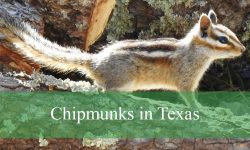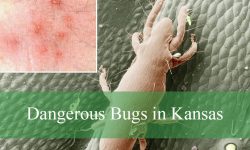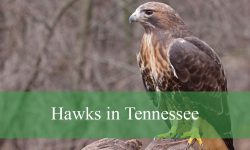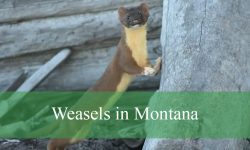Wolf spiders in Texas are fascinating and diverse predators that play an important role in the state’s ecosystems. These spiders are known for their excellent hunting skills and distinctive eye patterns, making them easy to recognize for anyone interested in wildlife. Texas’s wide range of habitats provides the perfect environment for many species of wolf spiders to thrive.
Unlike many spiders that rely on webs to catch their prey, wolf spiders in Texas actively hunt on the ground, using their speed and keen eyesight. Their robust bodies and hairy legs help them navigate through grasslands, forests, and even suburban gardens. Understanding the different types of wolf spiders in Texas can help you appreciate these remarkable hunters and identify them more easily.
In this article, we will introduce you to five common types of wolf spiders found in Texas. Each species has unique features and behaviors that make them stand out. With detailed descriptions and pictures, this guide will help you identify wolf spiders in Texas and learn more about their habits and habitats.
Overview of Wolf Spiders in Texas
Wolf spiders are a diverse group of ground-dwelling spiders commonly found throughout Texas. They belong to the family Lycosidae, which includes hundreds of species worldwide. In Texas, wolf spiders thrive in a variety of habitats ranging from dry grasslands and open fields to forest edges and suburban gardens. Unlike many spiders that spin webs to trap prey, wolf spiders are active hunters that rely on their speed, excellent eyesight, and agility to catch insects and other small arthropods. Their presence plays an important ecological role by helping control populations of pests and maintaining a balanced ecosystem.
Wolf spiders vary widely in size and coloration, but they typically have robust, hairy bodies and strong legs adapted for running and jumping. Their eyes are arranged in a unique pattern that distinguishes them from other spider families. Texas’s warm climate and diverse landscapes provide an ideal environment for these spiders to flourish year-round. Although they are often overlooked, wolf spiders are fascinating predators that contribute significantly to local biodiversity.
Because wolf spiders do not rely on webs, they can be found wandering on the ground during both day and night, although many species prefer hunting at night. They seek shelter during hot or dry conditions under rocks, leaf litter, or logs. Observing wolf spiders in their natural habitat offers insight into their intriguing hunting behaviors and their role as natural pest controllers.
Common Types of Wolf Spiders in Texas
Texas Wolf Spider (Hogna antelucana)
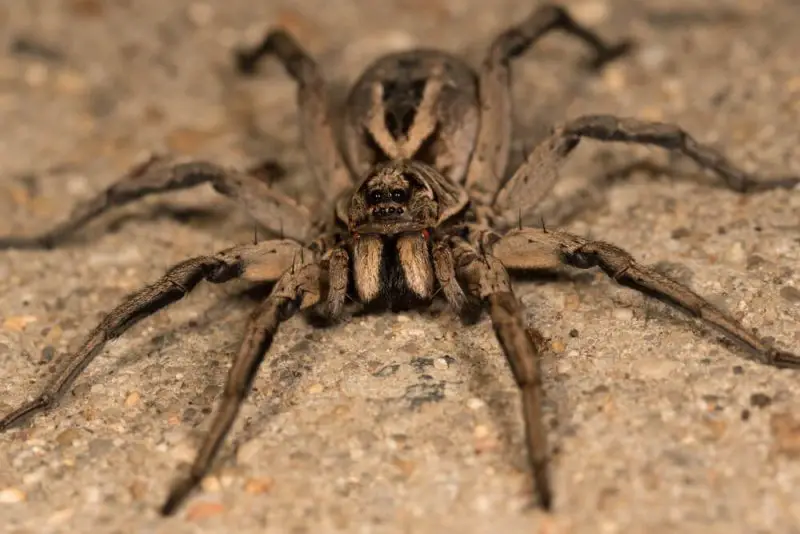
The Texas Wolf Spider is one of the larger wolf spiders found across the state, with a body length ranging from 20 to 35 millimeters. Its coloration is generally dark brown with lighter, often tan or cream-colored markings on the cephalothorax and abdomen. These markings provide excellent camouflage in the dry grasslands and scrubby habitats typical of much of Texas. Its robust body and strong legs make it a powerful and fast hunter. The arrangement of its eight eyes in three rows allows for excellent night vision and depth perception, critical for tracking and capturing prey.
This species is a ground hunter and does not spin webs to catch prey. Instead, it actively stalks and pounces on insects such as beetles, ants, and other arthropods. Texas Wolf Spiders are primarily nocturnal, taking advantage of cooler nighttime temperatures to hunt when many of their prey are active. During the day, they seek shelter under rocks, logs, or vegetation to avoid predators and harsh weather. Their excellent eyesight combined with their speed and agility makes them effective predators in their ecosystem.
Female Texas Wolf Spiders exhibit notable maternal care uncommon among many spider species. After laying eggs, the female attaches the egg sac to her spinnerets beneath her abdomen and carries it wherever she goes. When the spiderlings hatch, they climb onto their mother’s back and remain there for several weeks. This behavior protects the young from predators and environmental hazards, significantly increasing their chances of survival until they are old enough to fend for themselves.
Texas Wolf Spiders are found throughout most of Texas, especially in open fields, grasslands, and at the edges of woodlands. Their presence plays a crucial role in controlling insect populations, benefiting both natural ecosystems and agricultural areas. They thrive in habitats with dry, well-drained soil and moderate vegetation cover. Observing these spiders at night can be fascinating, as they actively hunt with remarkable speed and precision.
Carolina Wolf Spider (Hogna carolinensis)
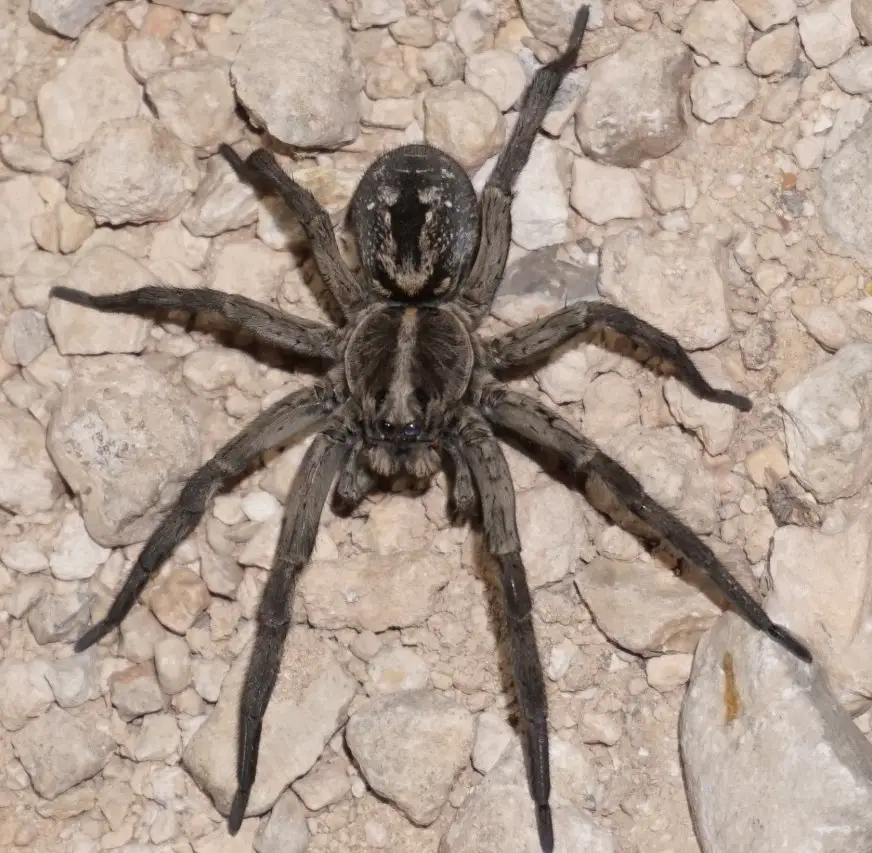
The Carolina Wolf Spider is a large and sturdy spider species that occurs in eastern Texas and other parts of the southeastern United States. It typically measures between 18 and 30 millimeters in body length and is characterized by a grayish-brown coloration with darker patterns on the cephalothorax and legs. Its legs often have banded markings which help it blend into leaf litter and forest floor debris. The spider’s large, forward-facing eyes give it excellent binocular vision, which is essential for hunting prey in low-light conditions.
Unlike orb-weaver spiders, the Carolina Wolf Spider does not construct webs to trap food. Instead, it actively hunts by chasing and ambushing insects, including crickets, beetles, and other small invertebrates. This species is mostly nocturnal but can occasionally be seen hunting during the day in shady forest areas. It prefers moist environments such as deciduous woodlands, riverbanks, and places with abundant leaf litter where it can hide and stalk prey effectively.
Female Carolina Wolf Spiders also show parental care by carrying their egg sacs attached to their spinnerets and allowing spiderlings to ride on their backs after hatching. This protective behavior increases offspring survival rates and is a remarkable adaptation to their ground-dwelling lifestyle. The spiderlings remain with their mother for several weeks, gradually dispersing once they are more independent.
Carolina Wolf Spiders are important predators in eastern Texas ecosystems, helping to regulate insect populations that might otherwise become pests. They are most commonly found in forested regions with moderate humidity and dense ground cover. Although large and fast-moving, these spiders are generally non-aggressive toward humans and will usually retreat if disturbed.
Rabid Wolf Spider (Rabidosa rabida)

The Rabid Wolf Spider is a medium-sized spider recognized by its distinctive black and white striping across its cephalothorax and legs. It typically grows to around 15 to 25 millimeters in body length. The bold patterning serves as both camouflage and warning coloration, allowing the spider to blend into grassy and leaf-strewn environments while also deterring potential predators. This species has long, slender legs which facilitate quick bursts of speed necessary for capturing fast-moving prey.
Rabid Wolf Spiders do not build webs but are active hunters, relying on their speed and excellent eyesight to catch insects such as grasshoppers, flies, and ants. They are mostly nocturnal and are commonly encountered in grassy fields, meadows, gardens, and even suburban lawns across Texas. Their agility and alertness make them very effective at capturing prey, often ambushing it after a short chase.
Females exhibit parental care by carrying egg sacs attached beneath their abdomen and protecting their spiderlings by allowing them to ride on their backs after they hatch. This behavior ensures the young are shielded from many dangers during their vulnerable early stages. The spiderlings disperse after several weeks once they become more capable of independent survival.
The Rabid Wolf Spider plays an important role in Texas ecosystems, especially in controlling pest insect populations in gardens and fields. Although its striking appearance may cause alarm, it is generally not aggressive toward humans and will retreat when disturbed. They prefer habitats with ample vegetation and leaf litter, where they can hunt and hide efficiently.
Florida Wolf Spider (Hogna florida)

Despite its name, the Florida Wolf Spider is also found in southern Texas, where it occupies similar habitats to other wolf spiders. This species is medium to large-sized, usually measuring 18 to 30 millimeters in length. Its body is mottled brown and tan with subtle darker markings that provide camouflage on forest floors and leaf litter. The spider’s hairy body and legs enhance its sensory perception, aiding in prey detection and environmental awareness.
The Florida Wolf Spider hunts primarily at night, relying on speed and stealth rather than webs to capture insects and other small arthropods. It prefers shaded, moist forested areas with abundant leaf litter and ground debris. During the day, it typically hides under logs, rocks, or thick vegetation to avoid predators and harsh conditions. Its nocturnal lifestyle allows it to exploit food resources while minimizing exposure to daytime predators.
Females carry their egg sacs attached to their spinnerets and show maternal care by carrying their spiderlings on their backs after they hatch. This protects the young spiders until they are capable of surviving on their own. The duration of maternal care can last several weeks and is essential for the spiderlings’ survival in the wild.
Florida Wolf Spiders contribute significantly to controlling insect populations in southern Texas woodlands. They are shy and avoid human contact, making them unlikely to bite unless provoked. Their presence indicates a healthy ecosystem and balanced insect community in the areas they inhabit.
Plains Wolf Spider (Hogna lenta)

The Plains Wolf Spider is a large, dark-colored species common in the grasslands and plains of Texas. Its body length ranges from 20 to 40 millimeters, and it has a thick, hairy appearance that helps with camouflage among grasses and soil. The spider’s strong legs and robust build enable it to run quickly to chase down prey or escape threats. Its coloration typically ranges from dark brown to black with subtle patterning on the abdomen.
Unlike web-building spiders, Plains Wolf Spiders are active hunters that rely on their speed and keen eyesight to capture a variety of insects and small arthropods. They are mostly nocturnal but can sometimes be seen during the day, especially in shaded areas or after rain. Their hunting strategy involves stalking prey and sudden rapid attacks, making them efficient predators in open prairie environments.
A unique feature of this species is the female’s maternal behavior. She carries an egg sac attached to her spinnerets and after the spiderlings hatch, they climb onto her back for protection. This behavior increases their chances of survival during early life stages when they are vulnerable to predators and environmental hazards.
Plains Wolf Spiders play an important role in maintaining insect population balance across Texas grasslands. They prefer dry, open habitats with plenty of ground cover for hunting and shelter. Observing these spiders can provide valuable insight into the biodiversity and health of prairie ecosystems.
How to Identify Wolf Spiders in Texas
Identifying wolf spiders in Texas involves looking at several key features that set them apart from other spider families. One of the most distinctive traits is their eye arrangement: wolf spiders have eight eyes arranged in three rows, with the middle row containing four large eyes that provide excellent night vision. This eye pattern is unique and helps distinguish them from similar-looking spiders like nursery web spiders or jumping spiders.
Wolf spiders typically have a robust, hairy body and long, strong legs that allow them to run quickly. Their coloration usually blends with their surroundings, ranging from browns and tans to grays and blacks, often with subtle stripes or spots on the cephalothorax and abdomen. Because they are ground dwellers, their legs often have spines or hairs that assist with sensing vibrations and movement nearby. Size can vary from small to quite large, with some Texas species reaching up to 4 centimeters in length.
Another useful identification clue is their behavior. Unlike many spiders that build webs, wolf spiders roam freely on the ground in search of prey. They are agile hunters, often seen running rapidly across soil, leaf litter, or grass. Females are also recognizable by their habit of carrying an egg sac attached to their spinnerets and later, their spiderlings ride on their backs — a behavior uncommon among spiders but typical for wolf spiders.
Are Wolf Spiders Dangerous to Humans?
Wolf spiders are generally not dangerous to humans and are considered non-aggressive. While they are capable of biting if provoked or handled roughly, their venom is typically mild and not harmful to healthy adults. Bites may cause localized pain, redness, and swelling similar to a bee sting, but serious allergic reactions are very rare. Wolf spiders prefer to avoid human contact and will usually flee rather than bite.
Because of their large size and fast movements, wolf spiders can appear intimidating, but they do not pose a significant threat. They play a beneficial role in controlling insect populations and should be appreciated rather than feared. If you encounter a wolf spider in or around your home, it’s best to gently relocate it outdoors rather than kill it.
In rare cases, people with allergies or weakened immune systems might experience stronger reactions to wolf spider bites, so medical attention is recommended if symptoms worsen. Overall, wolf spiders are important members of Texas’s ecosystems and help keep pest insects in check without posing serious risks to humans.

